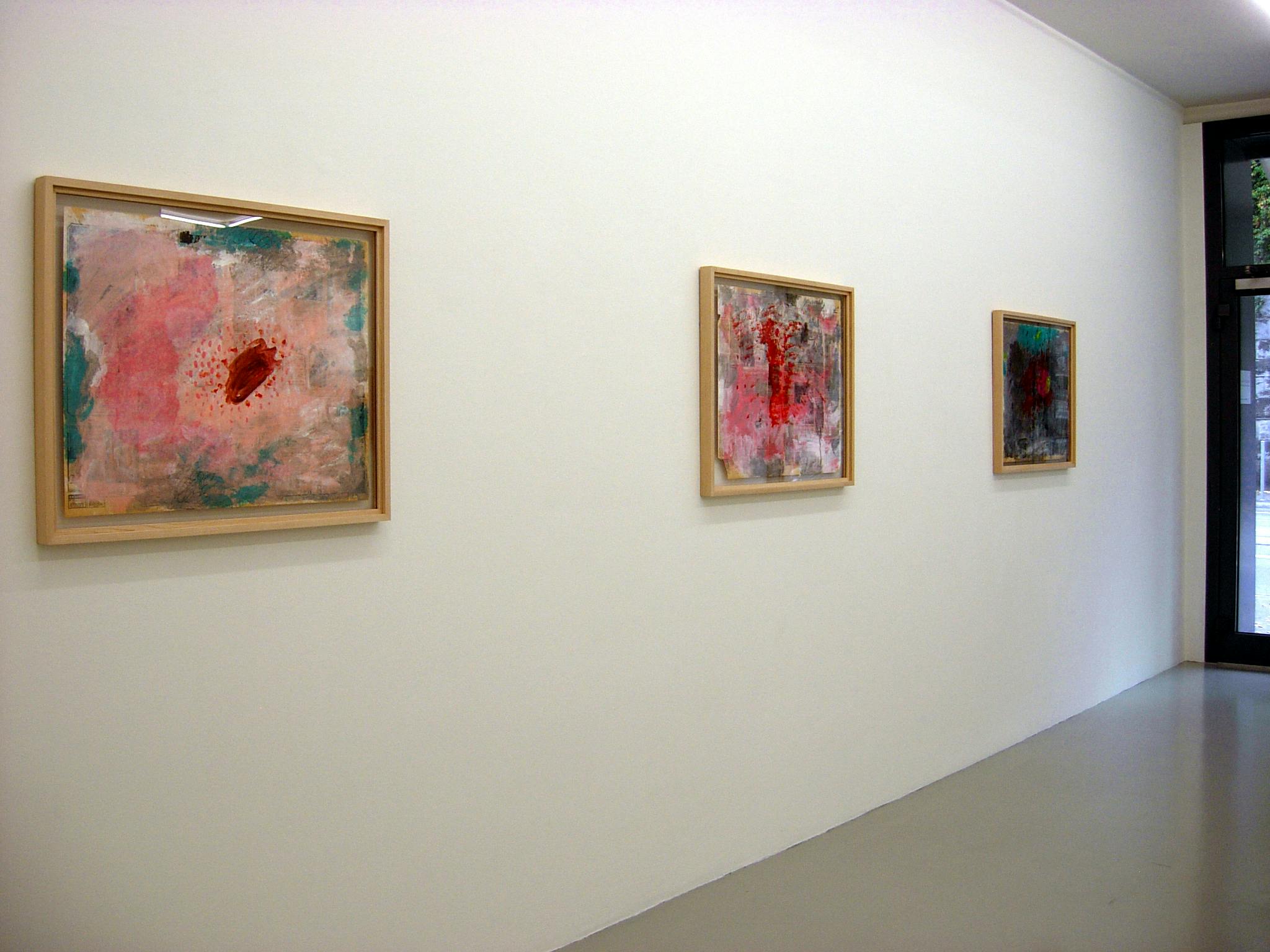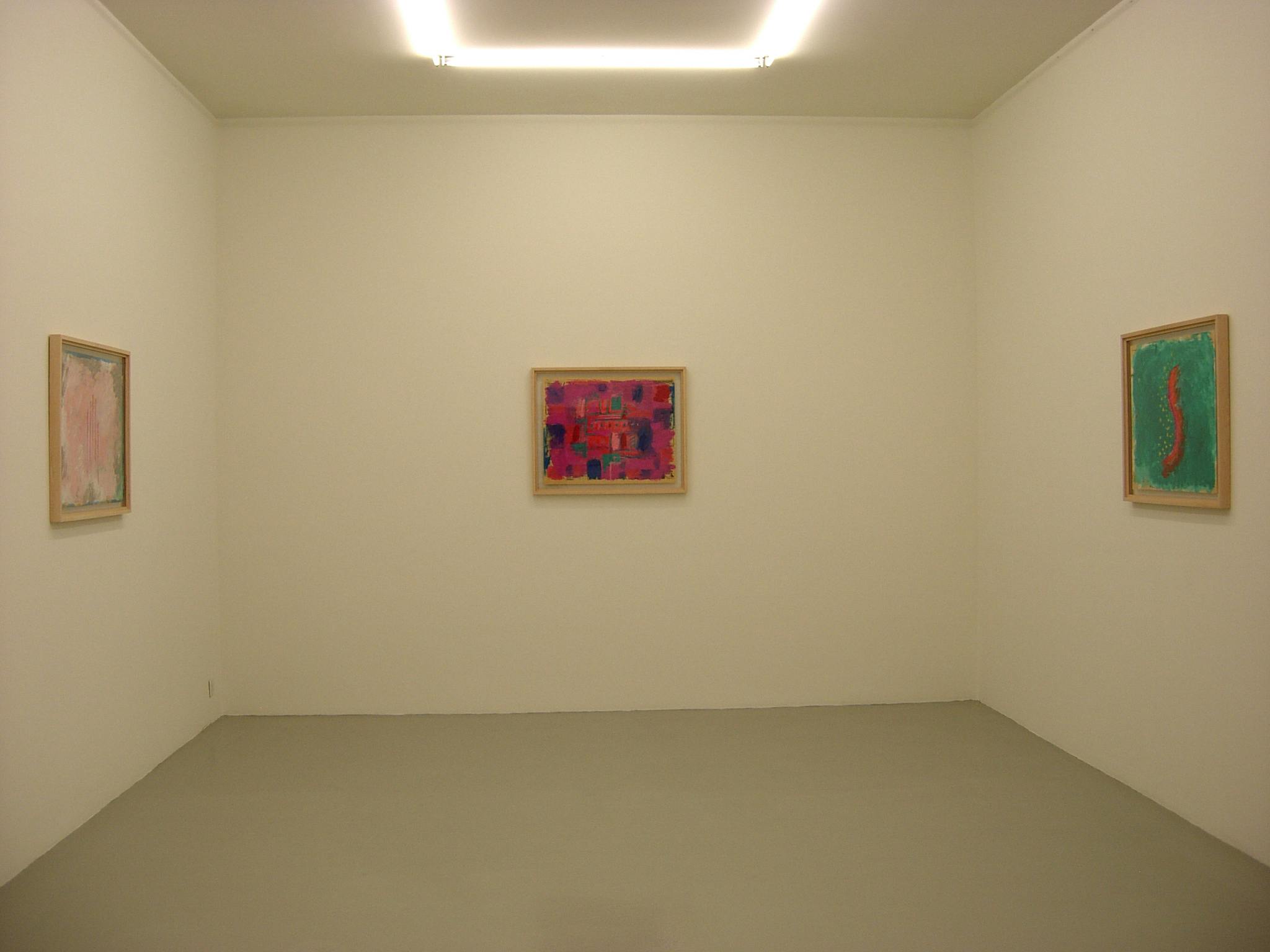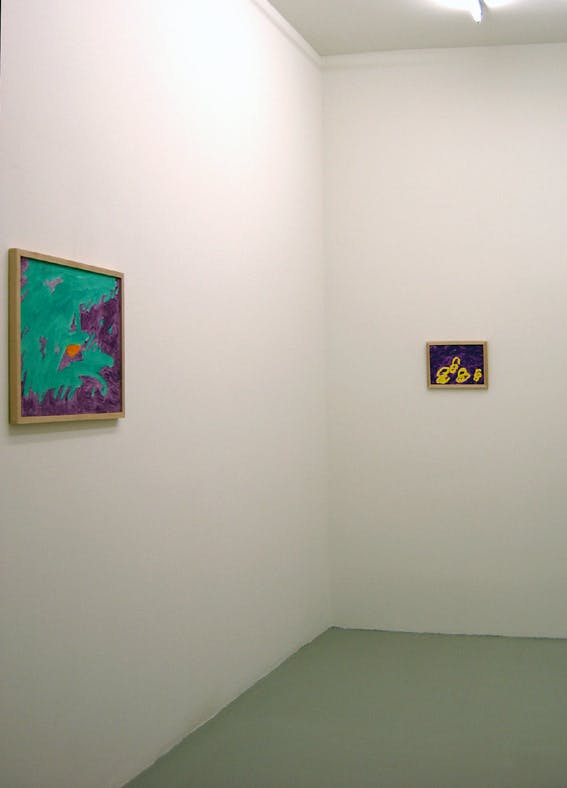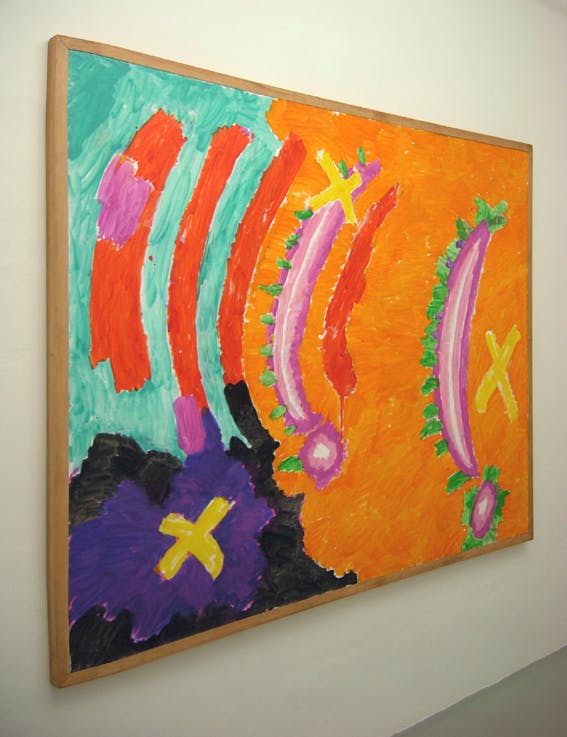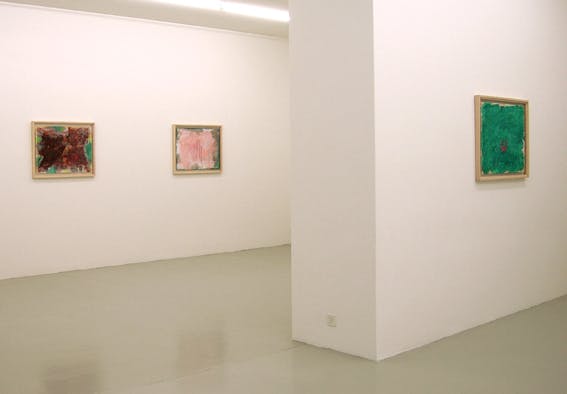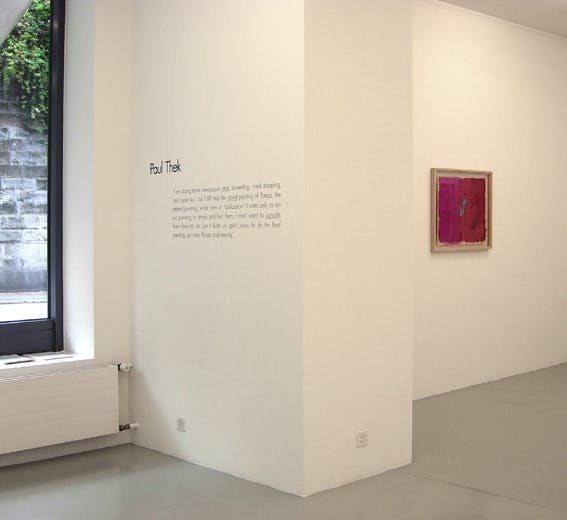We have pleasure in presenting twelve newspaper paintings by the American artist Paul Thek (who was born in Brooklyn, New York in 1933 and died in New York in 1988) at our next exhibition. Paul Thek is not only one of the legendary founders of installation art, but also one of the first to have departed from the image of the self-inventive artist and to introduce the artistic co-operative into the museums. The ephemeral work of this deeply religious artist was often used in rituals. The famous Fishman, a Latex cast of the artist containing innumerable fishes, painted garden gnomes and pyramids and mastabas (ancient Egyptian tombs) are an important part of his artistic universe. Paul Thek became known in 1965 with his Technological Reliquaries, wax effigies of parts of the body or pieces of meat in plexiglass boxes.
Paul Thek has been somewhat forgotten since his death in 1988, which may be due to the fact that his work pays homage to the ephemerality and dematerialisation, and that his process-based installation art is based on the power of the present moment. In addition, his installative works, his "works in progress" which were created primarily for the Stedelijk Museum, the Moderne Museet, the dokumenta 5 under Harald Szeemann and the 1980 Venice Biennale, are no longer in existence. Only isolated parts of these works have been preserved, for example restored items from the exhibition "Ark, Pyramid Easter – a visiting group show", curated by Jean-Christophe Ammann in the Lucerne Museum of Art. Thus the artistic legacy of Paul Thek consists primarily of gouaches, paintings and individual bronze sculptures.
After completing his studies at the Art Students League, New York, the Pratt Institute of Arts, and the Cooper Union School of Arts, Thek was occupied mainly with drawing, as far back as the mid-1950s, most of it done on newspaper, which Thek regarded as a symbol of the phenomenon of time, ephemerality and impetus. Newspaper was also the construction material that Thek and his collaborators used for the large-format pyramids.
Apart from figurative black-and-white drawings, the gouaches tend towards abstraction and radiate an intensive colourful quality and almost reckless, violent brushwork. In addition to subjects such as blue and red snakes on sand-coloured ground, or an amoeba-like shape on a pale blue ground, we find abstract configurations ranging from a green and orange S-curve via a brick wall of pastel squares to a purely gestural all-over. The majority of the newspaper texts have been painted over. Sometimes isolated letters from the New York Times are recognisable, sometimes they are entirely obliterated, as if the composition were trying to censure the article or undermine the power structures that were so prevalent in the press. Paul Thek is still topical, and his multi-faceted art continues to speak of the existential. This is evident not only from the exhibition of drawings originating from between 1981 and 1983, which was created in collaboration with the New York Galerie Alexander and Bonin, but also from the retrospective exhibition planned for the end of the year in ZKM, Karlsruhe, which presents Thek's work in the context of contemporary art. [Text: Dominique von Burg]






